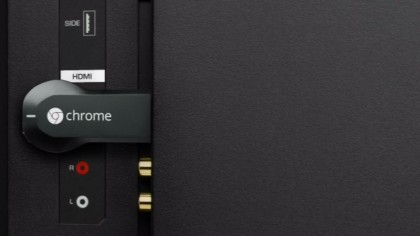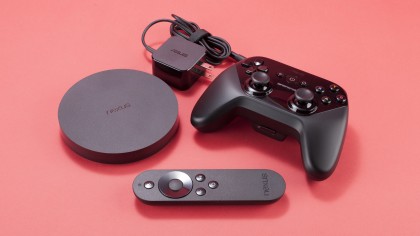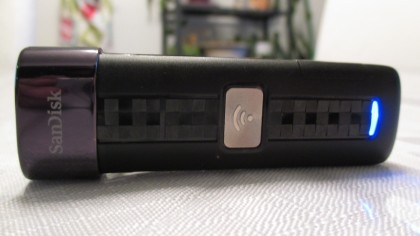How to reclaim 5 missing features on the Galaxy S6
Combining the best of form and function
4. Project what you see
Even though Samsung ditches MHL on the Galaxy S6, connecting your smartphone to a larger display is still an easy task with the right accessories.
With a $30 (£20, AU$40) Chromecast, you can project your phone's display wirelessly, without the tangles of cords and adapters, to a larger screen. You'll be able to mirror your phone's screen to get a larger projector, large display, or TV.

The Chromecast dongle is highly portable and setup is a breeze. Many offices are now equipping their televisions with Chromecast, but if yours doesn't, you can slip one into your briefcase or bag for travel.
If you need a more permanent solution for your office or conference room, Android TV is a great option. As a set-top box, Android TV delivers more functionality than Chromecast, but is less mobile.

Devices like the Nexus Player ($99, £65, AU$130) and the Nvidia Shield ($199, £130, AU$255) to run apps, stream video and play games on your TV in addition to projecting the content on your phone to your TV.
Additionally, for HDTVs that come with wireless display support, Galaxy S6 users can also mirror their screens using Miracast technology without any dongles or boxes attached.
Ultimately, with your Galaxy S6 connected wirelessly to a display via Chromecast, and with a Bluetooth keyboard and mouse attached, you have a mobile, pocket-sized workstation where you can create and edit documents, spreadsheets, and slides, edit photos and trim videos, reply to emails and manage your digital files.
Are you a pro? Subscribe to our newsletter
Sign up to the TechRadar Pro newsletter to get all the top news, opinion, features and guidance your business needs to succeed!
5. Extend your productivity
On the Galaxy S5, a USB OTG dongle allowed me to plug in a USB keyboard, mouse or flash drive, essentially turning my smartphone into a mini computer.
The feature seems to have been removed on at least the Verizon variant of the Galaxy S6 Edge. In our test, two different after-market USB OTG cables that worked on the Galaxy S5 and Galaxy Note 4 no longer work on the S6 Edge, but you can still find solutions that offer comparable functionality to accessing files on a USB flash drive or connecting PC peripherals.
One method is to use a portable wireless media streamer. With this alternative, users can plug their flash drives into the media streamer. Once plugged in, you'll be able to connect your Galaxy S6 or S6 Edge over an ad-hoc Wi-Fi network to the streamer to access the contents of your USB flash drive.
If you have multiple devices, many media streamers can stream to multiple devices so you and your colleagues can collaborate and work off of the same files on the same flash drive with a single media streamer. It's like a portable personal hotspot to connect to your files, rather than the mobile internet.
Kingston's MobileLite G2 ($35, £40, AU$65) on Amazon is one example of a media streamer, allowing you to plug in either a USB flash drive or a memory card to share files.

The SanDisk Wireless Connect Flash Drive ($50, £40, AU$65) is more like a traditional USB flash drive, but comes with wireless capabilities built-in. It has a full-size USB tip so you can connect the drive to a PC or Mac to transfer or share files over a "wired" connection, and then you can share those files to your phones and tablets over a Wi-Fi signal.
With Bluetooth HID support on Android, users do not have to plug a wired USB keyboard mouse if they want a PC-like experience to type out documents or quickly respond to emails.